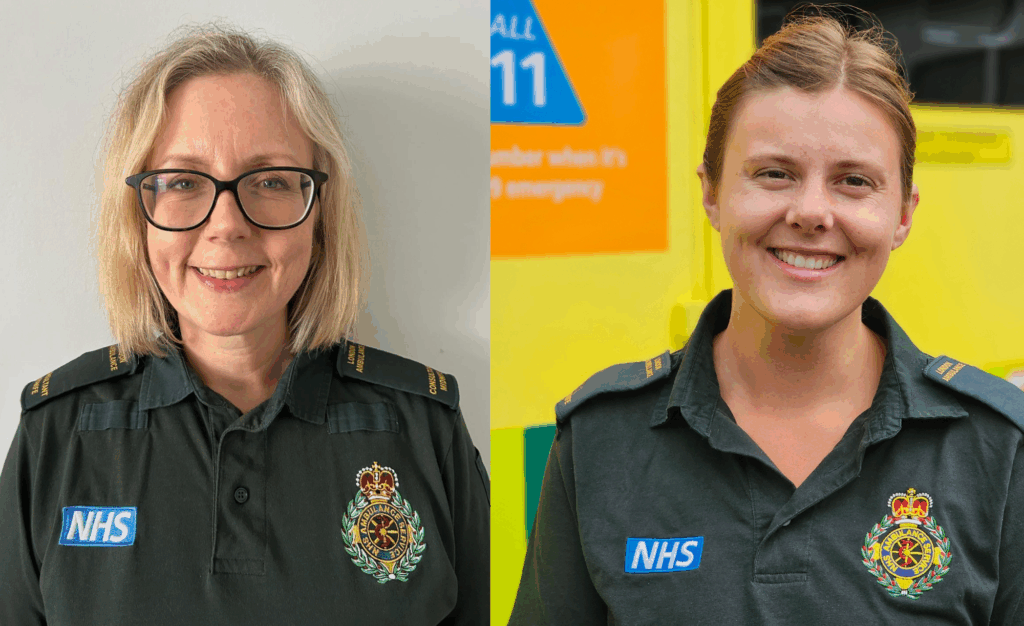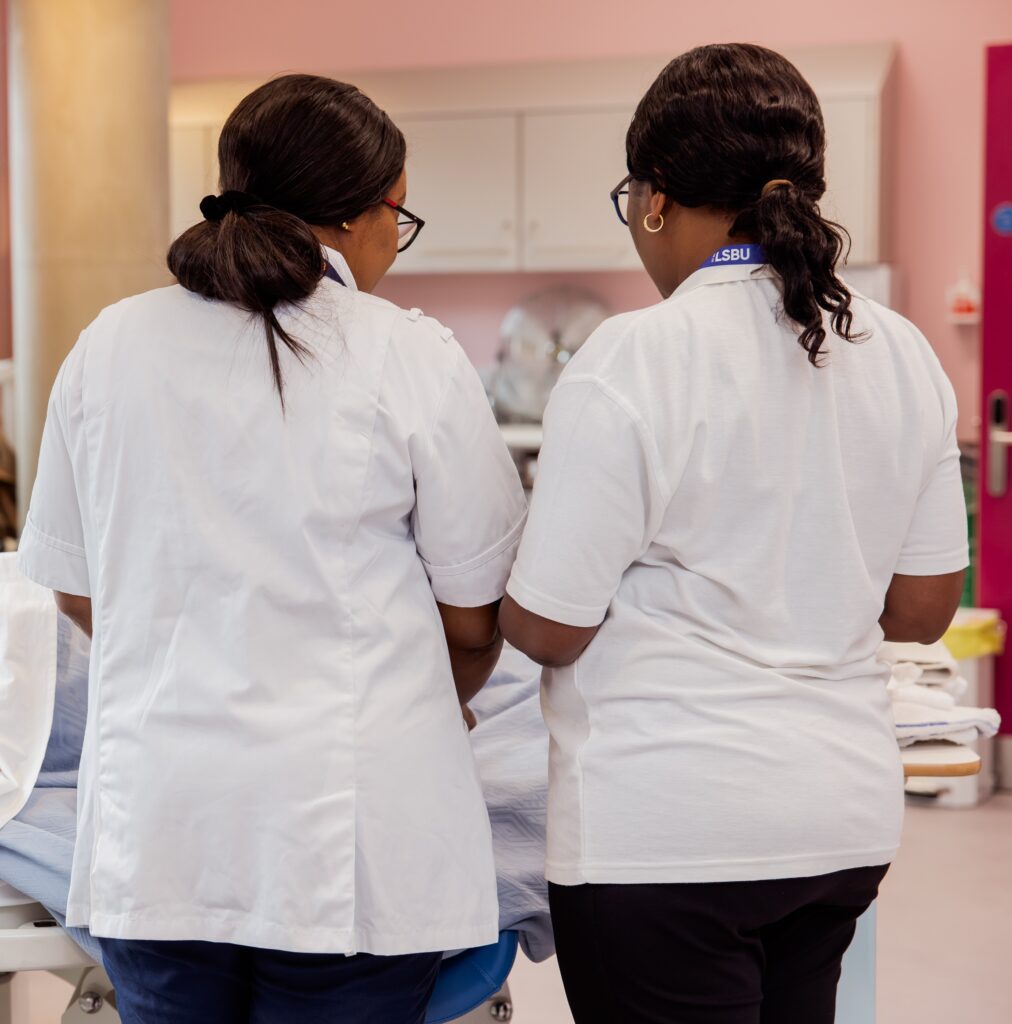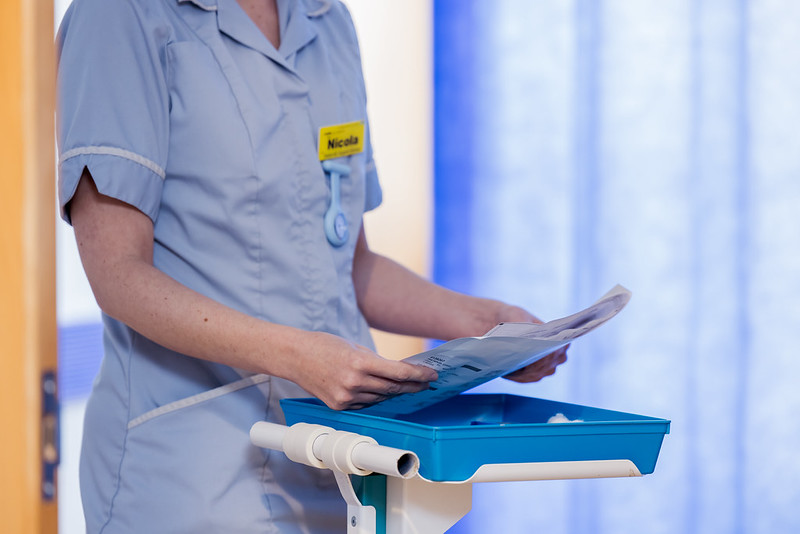On National Emergency Services Day (9 September), we celebrate the incredible people who keep the public safe in times of crisis. Among them are midwives like Lisa Smith and Aimee Humphreys, who have taken their skills into the ambulance service – supporting paramedics, ambulance clinicians, women and babies in the most urgent and unpredictable moments.
Lisa, who became a consultant midwife six years ago, joined London Ambulance Service in 2023. It was the introduction of a maternity triage line hosted by the ambulance service which piqued her interest.
As part of a team – which also includes two lead midwives and a practice development midwife – Lisa provides support to ambulance clinicians with maternity training and debriefing after incidents, which are often very high risk.
“The clinicians really appreciate our midwifery knowledge and skills and we receive great feedback about the maternity training we offer,” said Lisa. “I am still learning something new every day about how the ambulance service operates. Two years into the role, I’m still blown away every time I go in the emergency operations centre where all the calls come in and resources are dispatched, often to highly complex incidents.
“The jobs my ambulance colleagues attend includes preterm labour, major antepartum haemorrhage, breech birth and pregnant women who have been involved in road traffic collisions. They are amazingly resilient and compassionate, and often find themselves having to support people in very challenging circumstances.”
Lisa continues to work clinically one day a week as a community midwife, which she finds grounds her after busy emergency service shifts. But working in the ambulance service also helps her see maternity units through a different perspective.
“That was one of the biggest surprises to me when I came into the ambulance service, and we work with Trusts to make improvements in access and signage to labour wards, for example,” Lisa said.
“To any midwives who are considering a role in emergency services, I would say it’s a great opportunity to work with lots of different Trusts and regional colleagues to improve care. To secure a role, I’d recommend spending some time in practice education and clinical governance.”
Aimee joined South Western Ambulance Service in 2021, five years after qualifying as a midwife. She is currently a specialist lead midwife for the service. Her inspiration for joining the ambulance service came after she witnessed a traffic collision.
“I delivered first aid to a critically unwell person at the scene and I was in awe of the various ambulance clinicians who responded,” she said. “It prompted me to consider how the worlds of maternity and pre-hospital care intersect.”
Aimee still works clinically as a community midwife, and her two roles means her weeks are varied.
“My roles are very different, but they also complement each other,” she said. “My ambulance service work requires me to draw on my specialist knowledge and experience and make decisions to improve care for women and babies, keeping the ‘bigger picture’ in mind. This can involve developing training for ambulance clinicians, writing guidelines, reviewing incidents and leading quality improvement projects. A lot of this work can be done remotely – I never imagined having ‘WFH’ days as a midwife!
“I also spend time at ambulance stations, education centres and hospitals across the region. Working as a midwife in a strategic role is both challenging and rewarding, and has expanded my understanding of how professionals and organisations outside of maternity units have an important role to play in women’s health.”
Working in the ambulance service means being in high-pressure situations and unpredictable environments – and Aimee believes she has learned from her ambulance service colleagues a new type of focus which comes in handy during these situations.
Aimee added: “Maternity represents less than 1% of calls coming into the ambulance service – so having midwives in the organisation provides that specialist perspective to an area that most ambulance staff have limited exposure to. Having midwife presence on training and debriefs is highly valued by our staff.
“If any of my midwifery colleagues are interested in pursuing a role in emergency services, I would say go for it! It has certainly been the highlight of my career so far. It would be fantastic if all ambulance services considered employing a midwife – or even better, a team of midwives – to support our staff to deliver the best possible care to families who access emergency services.”


